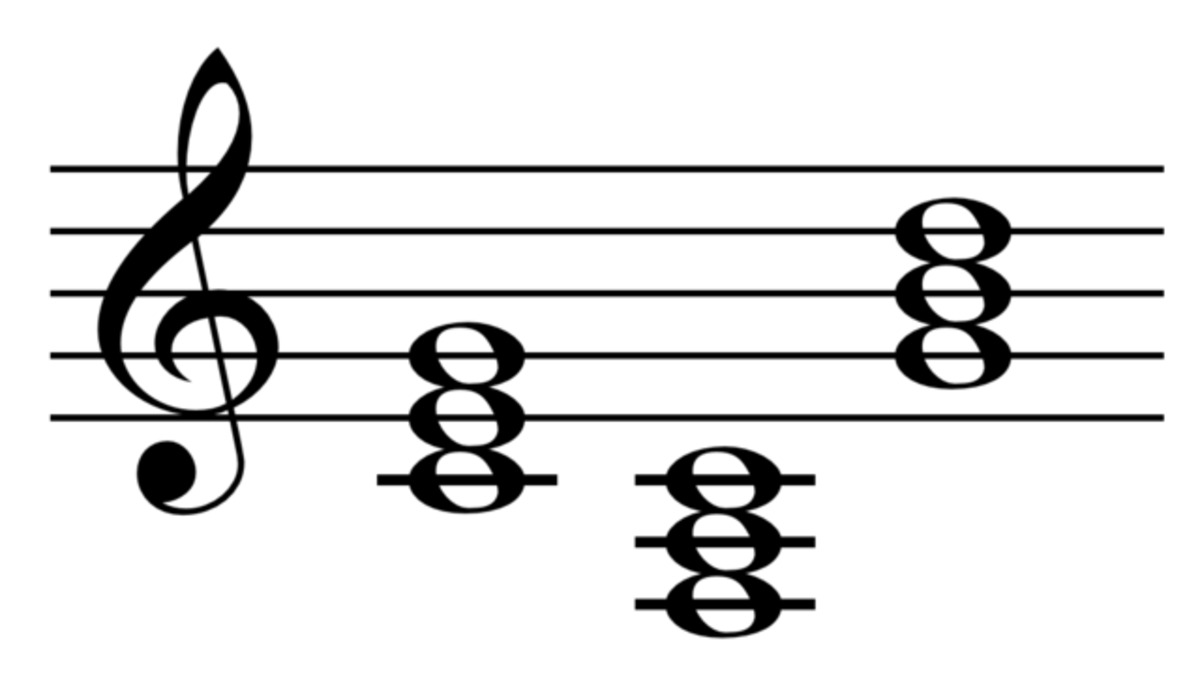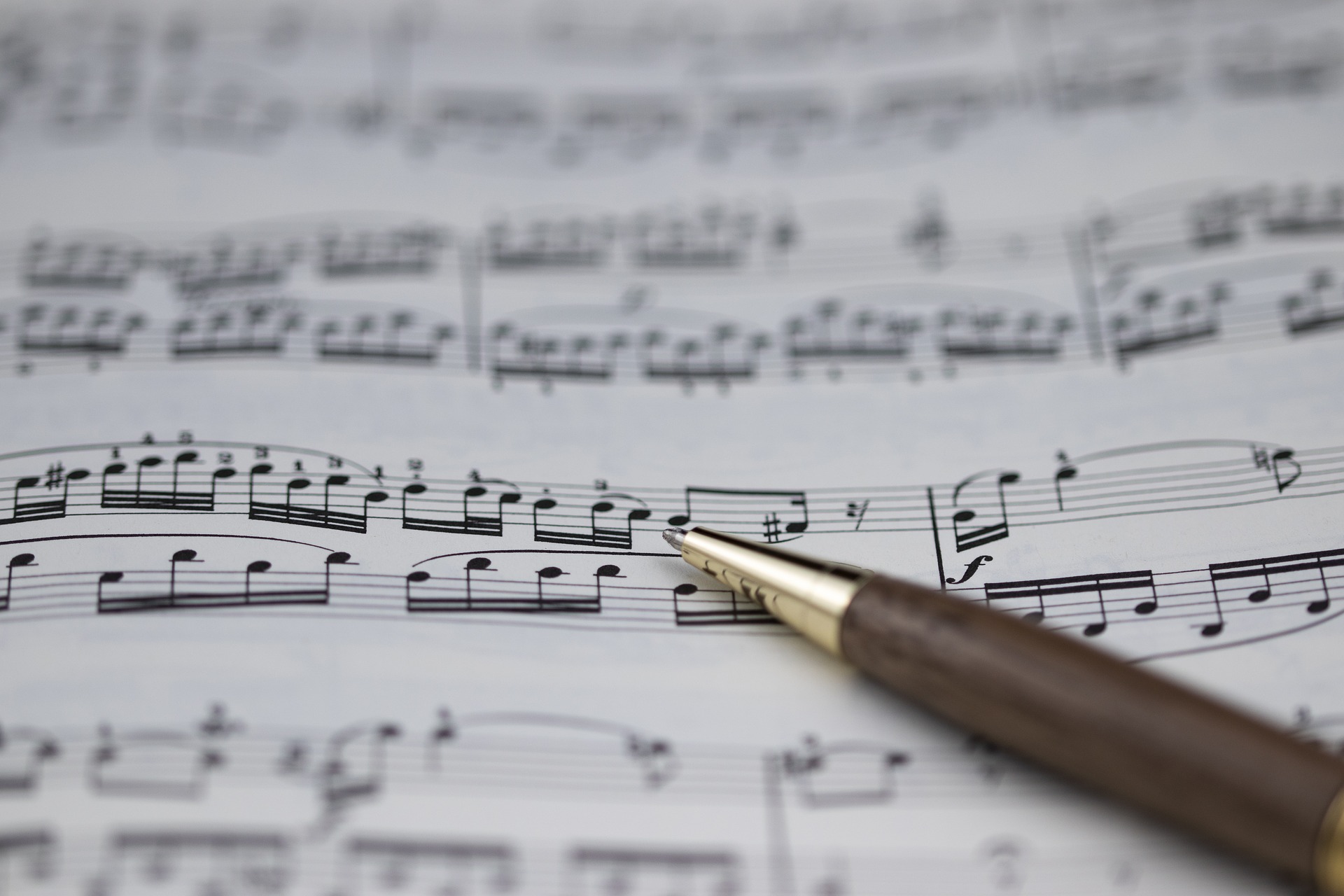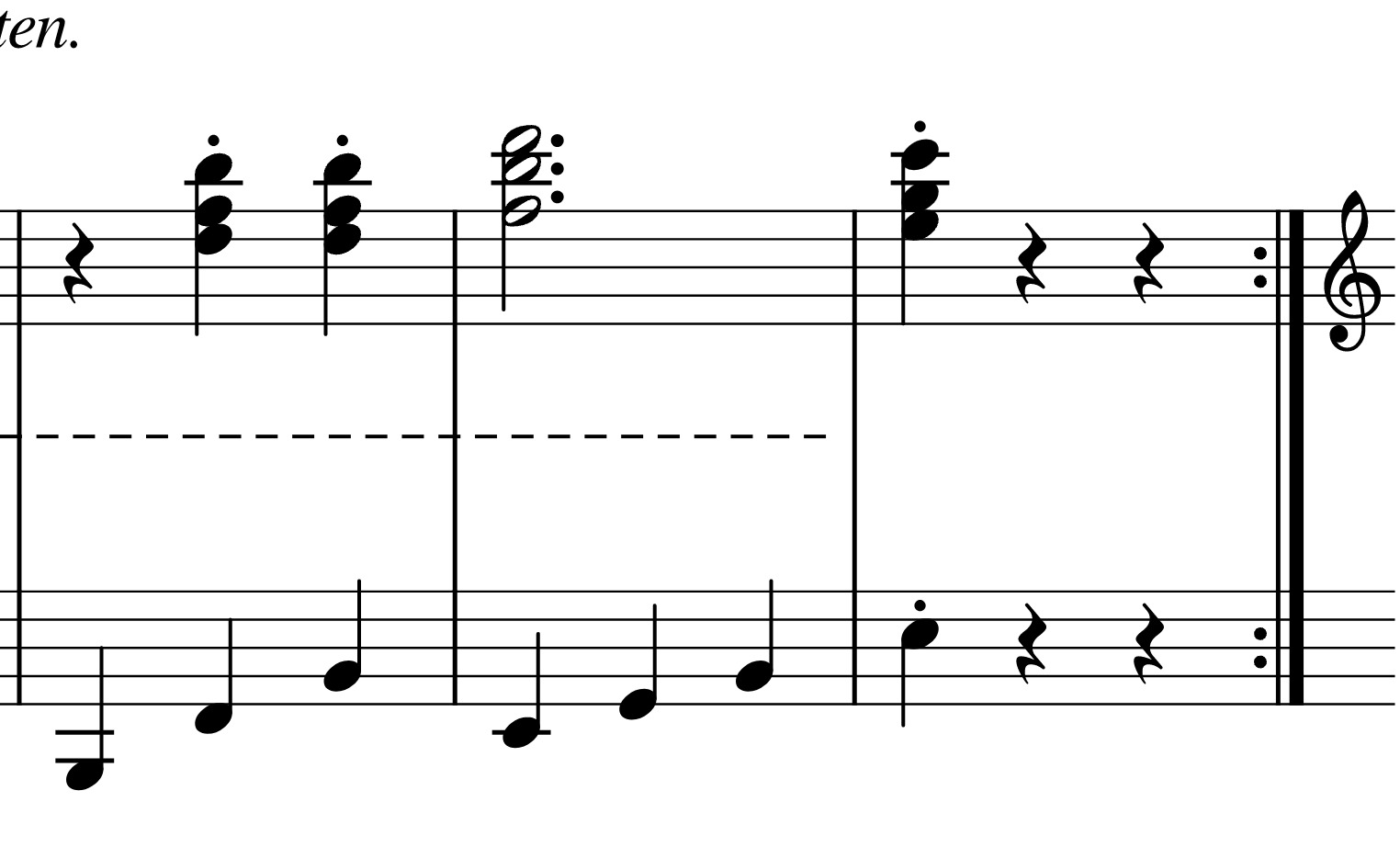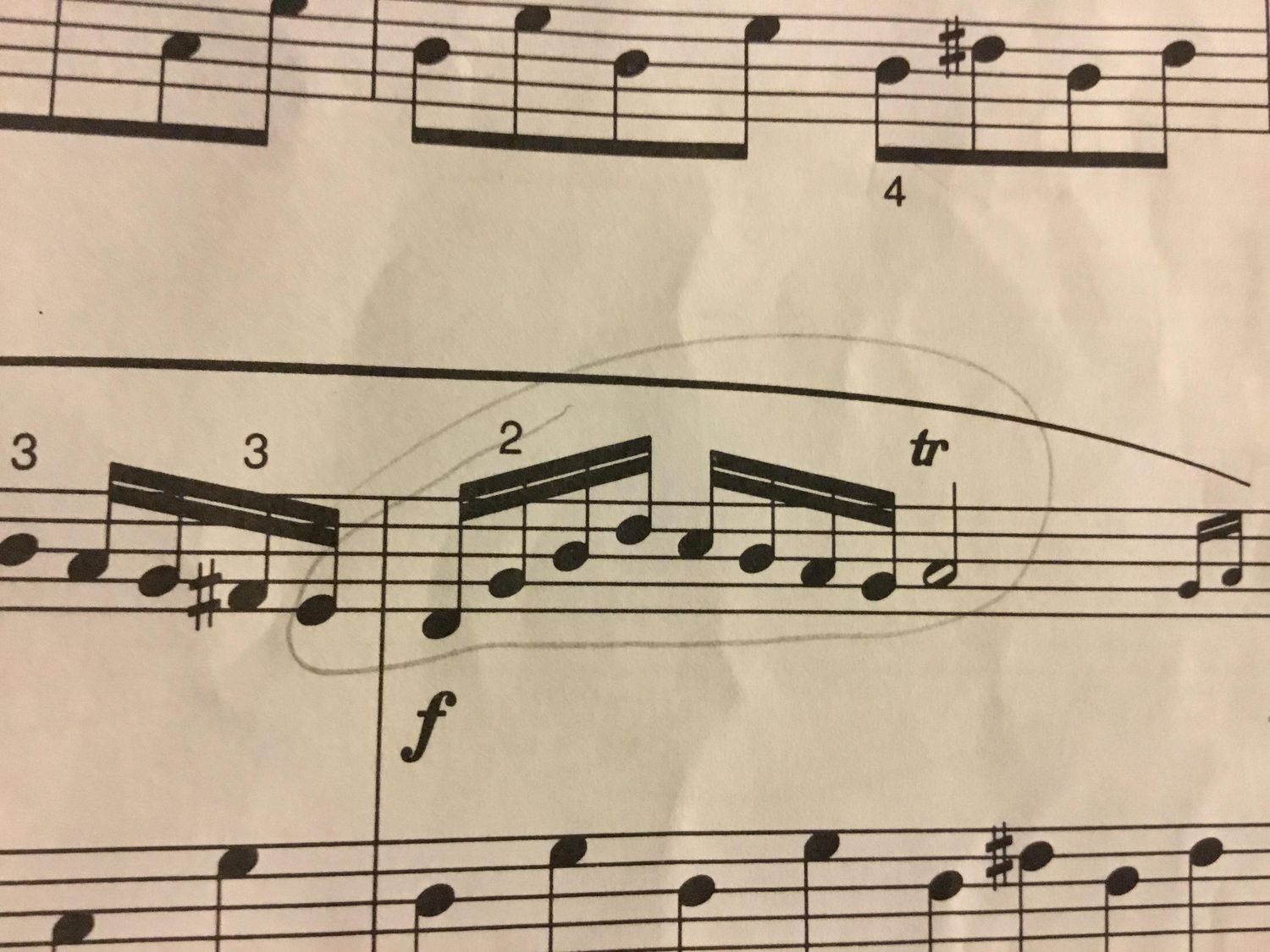Home>Production & Technology>Music Theory>What Is A Clave In Music Theory
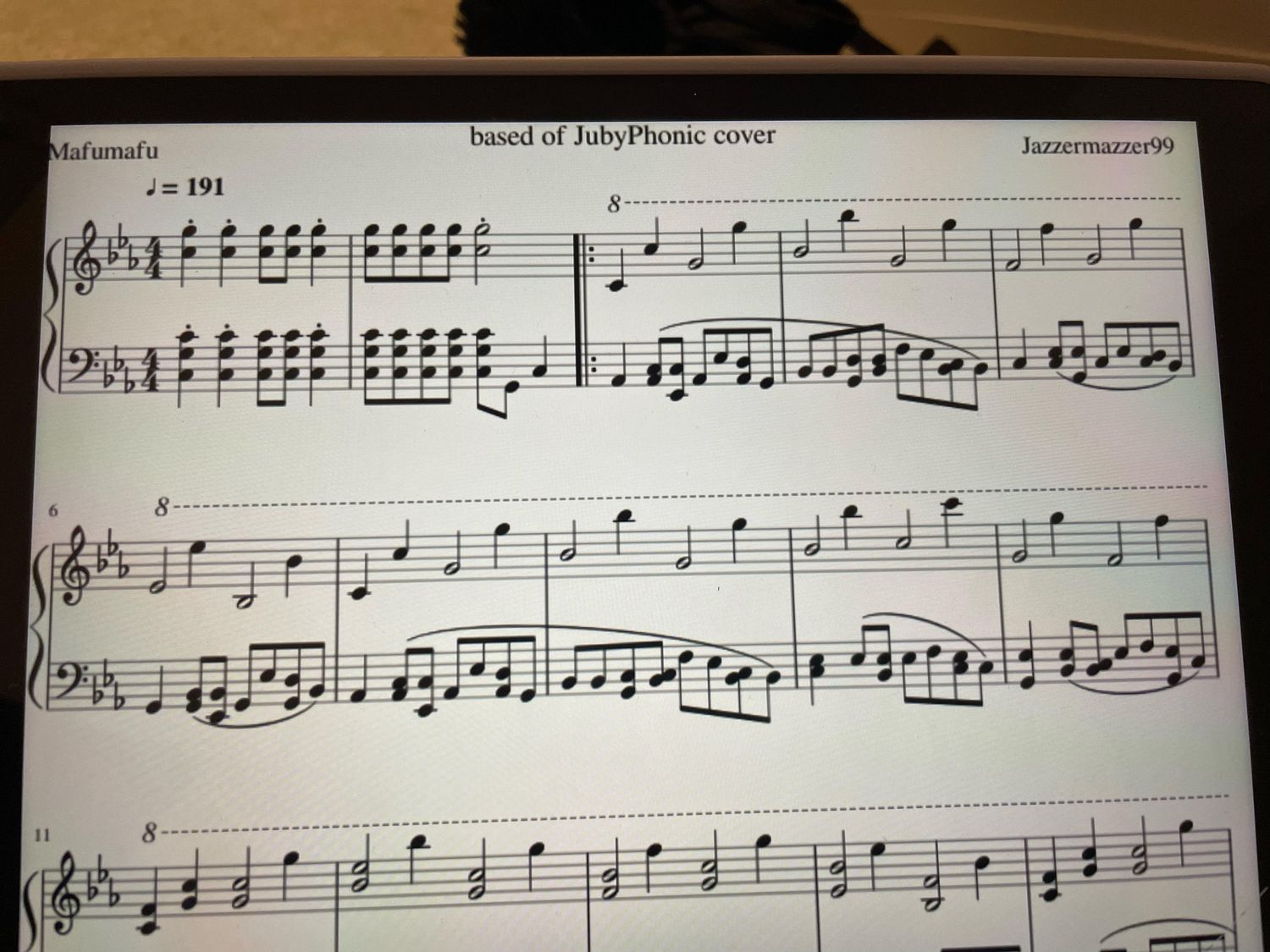

Music Theory
What Is A Clave In Music Theory
Published: January 30, 2024
Discover the role of a clave in music theory and how it contributes to rhythm and groove. Explore the fundamentals of music theory and enhance your understanding of this essential element.
(Many of the links in this article redirect to a specific reviewed product. Your purchase of these products through affiliate links helps to generate commission for AudioLover.com, at no extra cost. Learn more)
Table of Contents
- Introduction
- Definition of a Clave
- Origins of the Clave
- Structure and Rhythm of the Clave
- Role and Significance of the Clave in Music
- Different Types of Claves
- Clave Patterns in Various Music Genres
- Cultural and Regional Variations of the Clave
- Common Instruments Used to Play the Clave
- Notable Songs and Compositions Featuring the Clave
- Conclusion
Introduction
Music theory is a vast and intricate subject that encompasses the study of various elements, such as melody, harmony, rhythm, and more. One element that holds a central role in many genres of music is the clave. The clave is a rhythmic pattern that acts as a foundation for the music, providing a framework for musicians to build upon. Understanding the clave is essential for any musician or music enthusiast, as it can enhance their appreciation and comprehension of different styles and genres.
Derived from the Spanish word for “key,” the clave unlocks the rhythmic structure of music, allowing musicians to create complex and intricate compositions. It has its roots in Afro-Cuban music but has since spread to influence a wide range of musical genres, from Latin jazz to pop, rock, and beyond. The clave serves as a rhythmic guidepost, providing a rhythmic compass for musicians to follow.
In this article, we will explore the definition, origins, structure, and significance of the clave in music theory. We will delve into the different types of claves, their patterns in various music genres, and the cultural and regional variations that add depth and diversity to this rhythmic element. We will also take a look at the common instruments used to play the clave and examine notable songs and compositions that prominently feature this rhythmic motif.
Whether you are a musician, music lover, or simply curious about the intricacies of music theory, this article will provide you with valuable insights into the world of the clave and its place in the grand tapestry of music.
Definition of a Clave
At its core, a clave is a rhythmic pattern consisting of a series of beats and rests, usually played on two wooden sticks or clave instruments. It serves as a foundational rhythm within a piece of music, providing a steady pulse and structure for other instruments to follow. The clave is characterized by a syncopated, offbeat feel, creating a unique and infectious groove.
The clave pattern typically consists of two measures, each containing two or three beats. The beats and rests are arranged in a specific sequence, creating a distinctive rhythmic pattern. The rhythm is often played in a call-and-response style, with one instrument playing the clave pattern, and others responding with complementary melodies or rhythms.
One of the essential features of a clave is its asymmetrical nature. The pattern is divided into strong and weak beats, creating a syncopated feel. The strong beats are emphasized, while the weak beats provide the contrasting rests. This rhythmic tension adds depth and complexity to the music, drawing the listener’s attention and creating a compelling rhythmic foundation.
The clave pattern can be heard in a wide variety of music genres, including Latin, Afro-Cuban, jazz, funk, and more. It has a universal appeal and has become an integral part of many musical traditions across the globe.
It is important to note that the term “clave” can also refer to the instruments themselves. The clave instruments are cylindrical wooden sticks, typically made of hardwood, with one stick producing a higher pitch and the other a lower pitch. When struck together, they produce a distinct percussive sound that is synonymous with the clave rhythm.
Overall, the clave represents a fundamental rhythmic element in music, providing structure, groove, and an infectious feel. Its unique pattern and syncopated nature make it a captivating and essential component in various music styles and genres.
Origins of the Clave
The origins of the clave can be traced back to the rich cultural heritage of Afro-Cuban music. It emerged during the slave trade era when African rhythms and musical traditions were brought to the shores of Cuba. The clave represents a fusion of African rhythmic concepts with European musical influences.
African slaves brought with them a rich musical tradition, characterized by complex polyrhythms, call-and-response patterns, and intricate percussion arrangements. These rhythmic elements were intertwined with the European musical traditions brought over by the Spanish colonizers, resulting in a vibrant and unique blend of musical styles.
The clave pattern itself has deep roots in the music of West Africa, particularly the Yoruba and Bantu cultures. In these cultures, the rhythmic pattern known as the clave or “Klav” was often played on a pair of sticks, similar to the modern clave instruments. It served as a form of communication, signaling important events, and providing a rhythmic framework for community gatherings and ceremonies.
When Africans were forcibly brought to Cuba as slaves, they carried their musical heritage with them. Over time, the African rhythms merged with the Spanish-influenced melodies and harmonies, giving birth to unique genres like rumba, son, mambo, and salsa. The clave played a pivotal role in these genres, shaping their rhythmic foundation.
The clave pattern became an integral part of Cuban music, evolving and spreading as musicians experimented with different variations and adaptations. It influenced not only Afro-Cuban music but also various styles of Latin American and Caribbean music.
Today, the clave has transcended its Afro-Cuban origins and has become a key rhythmic element in many music genres worldwide. Its infectious groove and distinctive pattern have captured the imagination of musicians and listeners alike, showcasing the enduring legacy of its African roots.
Structure and Rhythm of the Clave
The structure and rhythm of the clave are unique and distinctive, giving it its characteristic groove and infectious feel. The clave pattern is composed of a series of beats and rests, arranged in a specific sequence.
There are two main types of clave patterns: the 3-2 clave and the 2-3 clave. The numbers refer to the number of beats in each measure. In the 3-2 clave, the first measure consists of three beats, followed by a measure of two beats. In the 2-3 clave, the first measure has two beats, followed by a measure of three beats.
The clave pattern is typically played on two wooden sticks or clave instruments. The first stick, known as the “male” or “hembra,” produces a higher pitch, while the second stick, known as the “female” or “macho,” produces a lower pitch. When struck together, they create a distinctive percussive sound.
The rhythmic feel of the clave is syncopated, with the emphasis placed on the offbeat or weak beats. This syncopation creates a sense of tension and excitement in the music, drawing the listener’s attention and providing a unique rhythmic texture.
One of the key elements in the clave rhythm is its asymmetry. The pattern emphasizes the strong beats while incorporating rests on the weak beats. This rhythmic tension adds complexity and depth to the music, making it captivating and engaging.
The clave rhythm serves as a guiding framework for other instruments in the ensemble. It provides a steady pulse and structure, allowing musicians to interact and build their musical contributions around the clave pattern. It acts as a musical conversation, with other instruments responding to the clave’s call.
It is worth noting that the clave rhythm is not always explicitly played by the clave instruments themselves. Other instruments, such as drums, piano, guitar, or even vocalists, can replicate the clave pattern within their musical phrases, creating a cohesive and rhythmic interplay.
The structure and rhythm of the clave make it an essential component in various music genres, from Latin jazz and salsa to funk and beyond. Its infectious groove and unique pattern ensure that the clave continues to captivate audiences and musicians alike, making it a fundamental element in the world of rhythm and music.
Role and Significance of the Clave in Music
The clave holds a crucial role and significant influence in the world of music. Its rhythmic foundation and infectious groove make it an essential component in various genres and styles. Here are some key roles and significance of the clave:
- Rhythmic Foundation: The clave serves as a rhythmic foundation for the music. It provides a steady pulse and structure, allowing other instruments to synchronize and interact with one another. It acts as a guidepost, ensuring that the ensemble stays in sync and maintains a cohesive groove.
- Syncopation and Tension: The clave’s syncopated rhythm, with its emphasis on offbeats and rests, creates a sense of tension and excitement in the music. This syncopation adds depth and complexity, making the music dynamically interesting and engaging.
- Driving Force: The clave drives the rhythm forward, providing energy and momentum to the music. Its infectious groove has the power to make the audience move and dance, adding a sense of vitality and excitement to the performance.
- Call-and-Response: The clave pattern often functions as a call-and-response motif within a musical arrangement. Other instruments or voices respond to the clave’s rhythm, creating a musical conversation between the different elements of the ensemble. This interplay adds layers of texture and interaction to the music.
- Cultural Identity: The clave is deeply rooted in Afro-Cuban and African musical traditions. It represents a cultural identity and heritage, connecting musicians and listeners to the rich history and traditions associated with these cultures. It provides a unique sonic signature that distinguishes certain music genres and styles.
- Unity and Collaboration: The clave encourages unity and collaboration among musicians. It requires a collective effort to maintain the rhythmic integrity and groove established by the clave pattern. Musicians must actively listen and respond to the clave, fostering a strong sense of collaboration and teamwork.
From vibrant salsa rhythms to the infectious grooves of jazz and beyond, the clave’s role and significance cannot be overstated. It is a fundamental element that brings cohesion, excitement, and cultural identity to the music, making it an indispensable component in the musical landscape.
Different Types of Claves
The clave pattern has variations that have emerged over time, resulting in different types of claves. These variations add diversity and nuance to the rhythmic landscape of music. Here are some notable types of claves:
- 3-2 Clave: The 3-2 clave is one of the most common types of claves. It consists of three beats followed by two beats. It is often associated with Afro-Cuban and Latin music genres, such as salsa, rumba, and son. The 3-2 clave provides a lively and infectious groove that drives the rhythm forward.
- 2-3 Clave: The 2-3 clave is another widely used clave pattern. It consists of two beats followed by three beats. This pattern is often heard in genres like Afro-Cuban jazz, mambo, and Latin fusion. The 2-3 clave offers a different rhythmic feel, adding a diverse flavor to the music.
- Son Clave: The son clave is a specific variation of the clave pattern commonly found in Cuban son music. It is a 2-3 clave that is played in a syncopated manner, accentuating the offbeats and creating a lively, swinging feel. The son clave is a cornerstone of traditional Cuban music, infusing it with its distinct rhythmic identity.
- Rumba Clave: The rumba clave is a clave variation heavily utilized in rumba music. It has a unique 3-2+2-3 structure, where the first measure is 3-2 and the second measure is 2-3. This complex pattern adds an intricate and syncopated feel to the music, highlighting the African roots of rumba.
- Bomba Clave: The bomba clave is a clave variation predominantly found in Puerto Rican bomba music. It is a 6/8 rhythm, with a 3-3 structure. The bomba clave provides a driving and energetic pulse that underpins the lively dance rhythms of bomba.
- Guaguanco Clave: The guaguanco clave is a clave variation commonly used in Cuban guaguanco music, a subgenre of rumba. It has a 3-2+2-3 structure, similar to the rumba clave. The guaguanco clave emphasizes the offbeats, creating a captivating and sensual rhythm.
These are just a few examples of the different types of claves found in various music genres. Each clave brings its unique flavor and rhythmic complexity, enriching the musical tapestry and reflecting the diverse cultural heritage associated with its respective genre.
Clave Patterns in Various Music Genres
The clave pattern, with its infectious groove and rhythmic complexity, has found its way into a wide range of music genres. Its versatile nature has allowed it to seamlessly integrate into different musical styles, adding a distinct rhythmic flair. Here are some examples of clave patterns in various genres:
- Afro-Cuban and Latin Music: The clave pattern is at the heart of Afro-Cuban and Latin music genres like salsa, rumba, mambo, and son. In salsa, the combination of the 2-3 clave and the montuno piano rhythm creates a driving and energetic groove. Rumba music heavily utilizes the rumba clave, with its syncopated 3-2+2-3 structure. Mambo and son also feature clave patterns that provide the rhythmic backbone for these lively dance styles.
- Jazz and Latin Jazz: The clave pattern has made its way into jazz and Latin jazz, infusing these genres with a rhythmic edge. Latin jazz incorporates the clave patterns into improvisation, creating intricate rhythmic interactions between the rhythm section and soloists. Drummers often incorporate clave variations into their playing, adding intricate polyrhythmic elements to the music.
- Funk and Soul: The influence of clave patterns can be heard in funk and soul music. Artists like James Brown and various funk bands have incorporated the clave’s syncopation and groove into their compositions. The offbeat emphasis and tight rhythmic interplay in these genres owe a debt to the clave’s rhythmic influence.
- Pop and Rock: Even in mainstream pop and rock music, the clave’s impact can be felt. Artists like Santana have seamlessly integrated Afro-Cuban rhythms, including clave patterns, into their songs. The clave’s infectious groove adds a spicy flavor and a distinct rhythmic character to pop and rock compositions.
- World Music: The clave has transcended its Afro-Cuban roots and found its way into various world music genres. From West African music to Brazilian samba and reggae, the clave’s rhythmic influence can be heard in different cultural contexts, showcasing its global resonance and adaptability.
These are just a few examples of how the clave pattern has made its mark in various music genres. Its rhythmic structure and infectious groove have the power to elevate and transform music, adding depth, complexity, and a sense of rhythmic unity across different musical styles.
Cultural and Regional Variations of the Clave
The clave pattern has not only found its place in various music genres but has also undergone cultural and regional variations, reflecting the diverse musical traditions and regional influences around the world. These variations add depth and nuance to the clave’s rhythmic tapestry. Here are some notable cultural and regional variations of the clave:
- Afro-Cuban Clave: The Afro-Cuban clave represents the original form of the clave pattern. It emerged in Cuba during the colonial era, blending African rhythms with Spanish influences. The clave became deeply ingrained in Cuban music and evolved into different variations like the 3-2 clave, 2-3 clave, son clave, rumba clave, and more.
- Brazilian Clave (Clave de Samba): In Brazil, the clave pattern is known as “claves de samba” or samba clave. It has a distinct rhythm and application in Brazilian music, particularly in genres like samba, bossa nova, and Brazilian popular music. The Brazilian clave has its unique feel, reflecting the country’s rich musical heritage and cultural traditions.
- West African Clave: West Africa, the ancestral home of many African slaves transported to the Americas, has its own variations of the clave pattern. In countries like Ghana, Nigeria, and Mali, traditional African rhythms and clave patterns are still widely used in cultural ceremonies, traditional music, and dance forms.
- Puerto Rican Clave: In Puerto Rico, the clave pattern has taken on its own character, often referred to as “clave de bomba.” It is specifically associated with bomba music, which has deep African roots and is a significant part of Puerto Rican cultural heritage. The Puerto Rican clave adds unique flair and rhythm to the vibrant bomba style.
- Dominican Clave: The Dominican Republic has its own interpretation of the clave pattern, particularly within merengue music. The Dominican clave rhythm is closely linked to the energetic and infectious style of merengue, giving it a distinct rhythmic identity.
These variations of the clave pattern showcase the cultural diversity and regional influences that have shaped music around the world. Each variation carries a unique rhythmic flavor, reflecting the specific musical traditions, historical context, and cultural roots of the respective regions.
Common Instruments Used to Play the Clave
When it comes to playing the clave pattern, there are specific instruments that are commonly used to produce the distinct rhythm. These instruments play a vital role in the performance and interpretation of the clave, adding their unique timbre and color to the overall sound. Here are some of the most common instruments used to play the clave:
- Clave Sticks: The most traditional and iconic instruments used to play the clave pattern are the wooden sticks known as clave sticks. These cylindrical sticks are typically made of hardwood, like rosewood or granadilla. One stick is slightly thicker and longer than the other, producing a higher pitch, while the other stick is shorter and thinner, creating a lower pitch. By striking the two sticks together, musicians create the clave’s distinctive percussive sound.
- Claves de Palo: In some regions, such as Cuba, Puerto Rico, and the Dominican Republic, variations of the clave sticks called “claves de palo” are used. These are essentially thicker branches or dowels made from local hardwood, often with natural curves or irregular shapes. Claves de palo offer a different timbre and can be slightly larger or heavier than traditional clave sticks.
- Timbales: Timbales are a set of cylindrical drums with a metal shell, typically played with sticks. They are commonly found in Latin and Afro-Cuban music and are often used to accentuate the clave pattern. The drummer plays a syncopated pattern on the timbales, complementing the clave’s rhythm and adding a rhythmic punch to the music.
- Conga Drums: Conga drums, also known as tumbadoras, are tall, narrow drums played with bare hands. They are commonly used in Afro-Cuban music and salsa. Conga players can accentuate the clave pattern by playing rhythmic phrases on the drums, adding depth and texture to the overall clave groove.
- Bongos: Bongos are a pair of small, handheld drums that are played with the hands. They are widely used in various music genres, including Latin, jazz, and popular music. Bongo players can incorporate the clave pattern into their playing, enhancing the rhythmic complexity and interplay within the music.
- Pianos and Keyboards: While not traditional percussive instruments, pianos and keyboards are often used to replicate the clave pattern in some genres. Pianists or keyboardists will play specific rhythmic patterns that mimic the clave rhythm, adding a melodic component to the clave’s groove.
These instruments contribute to the performance and interpretation of the clave pattern, ensuring that its rhythmic presence is felt and heard. Whether through the striking of wooden sticks, the resonance of drums, or the melodic interpretation on a keyboard, these instruments bring the clave pattern to life, allowing musicians to create captivating and infectious rhythms.
Notable Songs and Compositions Featuring the Clave
The clave pattern has been prominently featured in numerous songs and compositions across various music genres, contributing to their distinctive sound and rhythmic appeal. Here are some notable examples of songs and compositions that showcase the clave’s influence:
- “Oye Como Va” by Tito Puente: This iconic Latin jazz and salsa composition, popularized by Santana, prominently features the 2-3 clave pattern. The infectious groove of the clave drives the rhythm of the song, creating an irresistible and danceable vibe.
- “Manteca” by Dizzy Gillespie and Chano Pozo: This jazz standard combines Afro-Cuban rhythms, including the clave pattern, with bebop jazz. The influential collaboration between Dizzy Gillespie and Chano Pozo showcases the seamless integration of the clave into the jazz idiom.
- “Guantanamera” by Celia Cruz and Buena Vista Social Club: This beloved Cuban folk song features the 3-2 clave pattern, providing the rhythmic foundation for the song. With its joyful melody and infectious clave groove, “Guantanamera” has become a symbol of Cuban music worldwide.
- “Smooth” by Santana feat. Rob Thomas: This Grammy-winning hit combines elements of rock, pop, and Latin music. The clave pattern can be heard subtly in the rhythm section, adding a touch of Latin flavor and groove to the song.
- “Watermelon Man” by Herbie Hancock: This jazz fusion composition by Herbie Hancock features a funky rhythm section that incorporates a clave-inspired pattern. The offbeat accents and syncopation create an infectious and dynamic groove.
- “El Cantante” by Hector Lavoe: This iconic salsa song, performed by the legendary Hector Lavoe, showcases the clave pattern throughout its arrangement. The 2-3 clave rhythm provides the foundation for the salsa groove, making it a quintessential representation of the genre.
These songs and compositions demonstrate the versatility and timeless appeal of the clave pattern. Whether in jazz, salsa, or popular music, the clave’s presence adds a layer of rhythm and groove that captivates listeners and defines the essence of these genres.
Conclusion
The clave, with its rhythmic complexity and infectious groove, plays a significant role in the world of music. As a foundational rhythm, it acts as a guiding force, providing structure and unity for musicians to build upon. The clave’s syncopated pattern and asymmetrical structure create a sense of tension and excitement, making it a captivating and essential element in various music genres.
From its origins in Afro-Cuban music to its integration into jazz, funk, pop, and beyond, the clave has transcended cultural and regional boundaries, leaving an indelible mark on the global music landscape. Its variations and adaptations reflect the rich diversity of musical traditions and cultural heritage.
The clave’s influence can be heard in notable songs and compositions across genres, adding depth, complexity, and rhythmic appeal. Whether it’s the driving rhythm of salsa, the subtle groove in jazz, or the funky patterns in pop and rock, the clave’s presence elevates the music and entices listeners to move and engage with the rhythm.
Understanding the clave and its significance in music theory enhances our appreciation and comprehension of different musical styles. It allows us to recognize the rhythmic intricacies that underpin our favorite songs and compositions. Whether we are musicians, music enthusiasts, or simply curious learners, the clave invites us to explore and immerse ourselves in the captivating world of rhythm and music.
So, let the clave guide your musical journey, as you listen to the infectious rhythms, dance to the grooves, and appreciate the cultural fusion and rhythmic tapestry that the clave represents. Embrace the clave, and unlock the rhythm that ignites our connection to the universal language of music.




